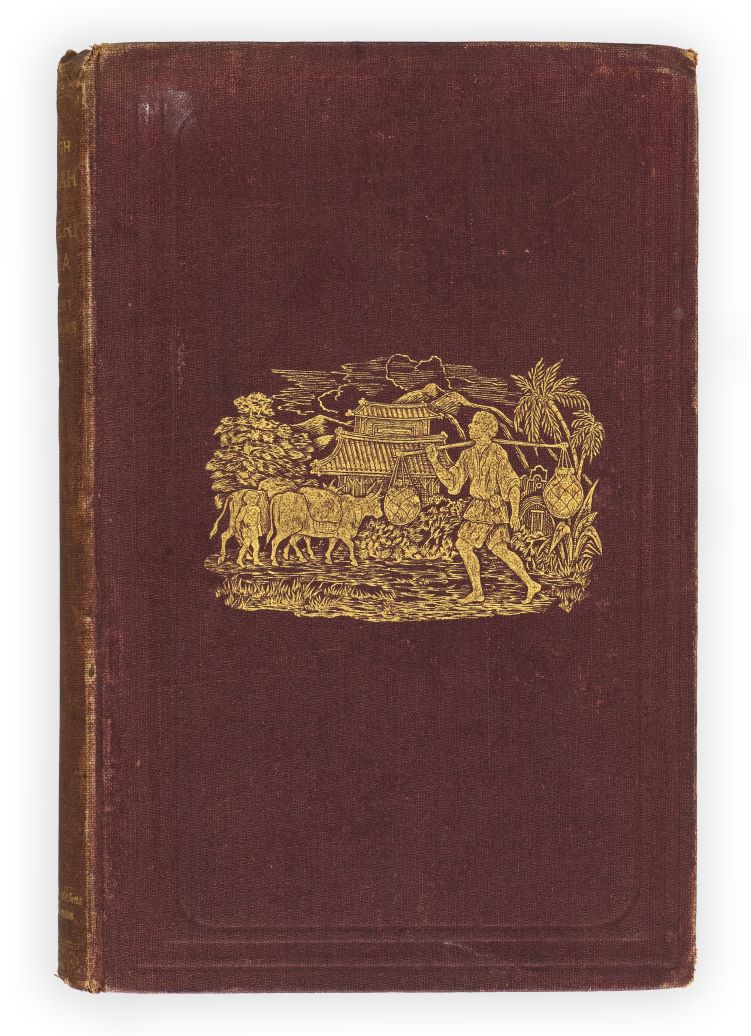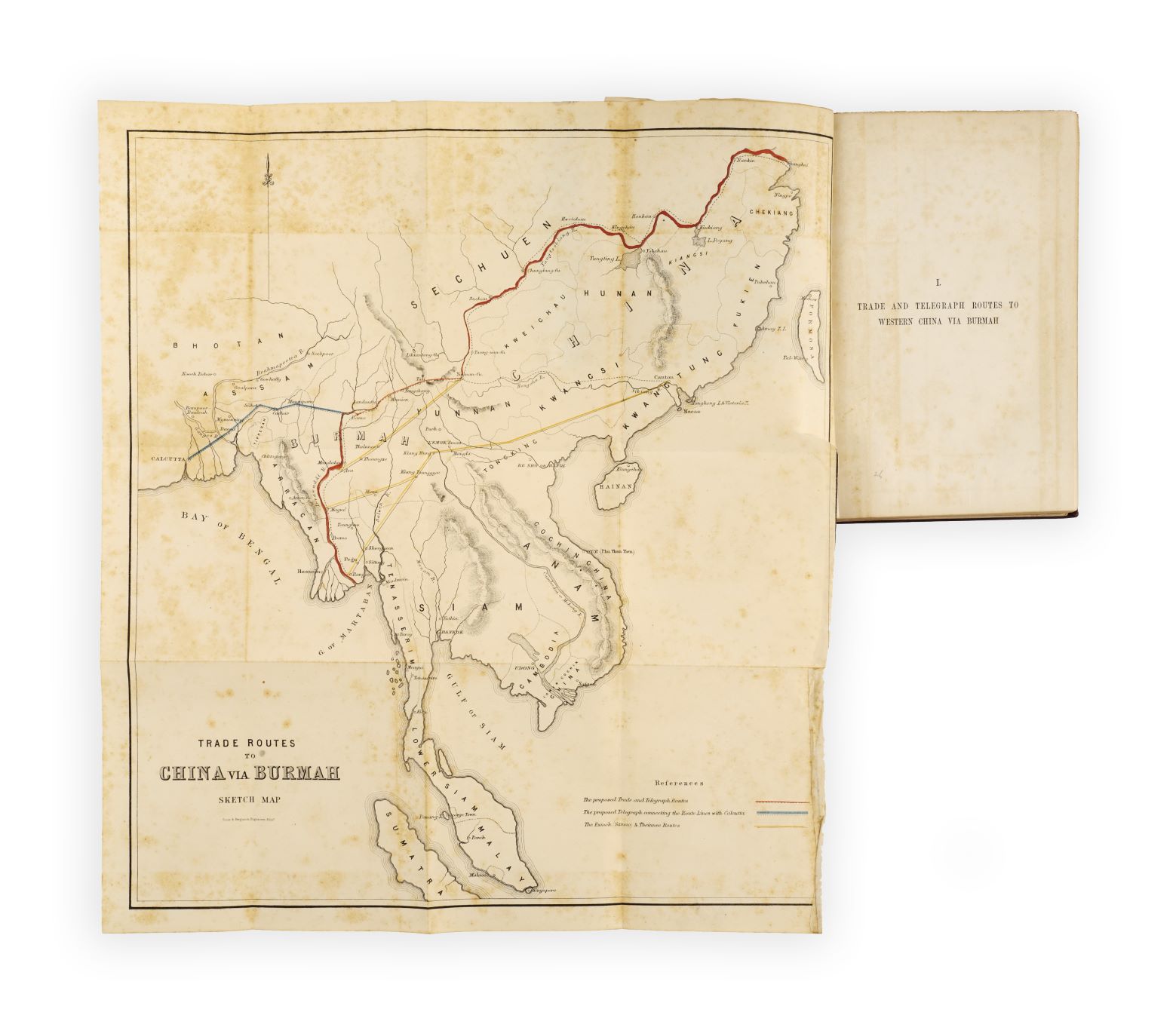

Burmese travels
WILLIAMS, Clement.
Through Burmah to western China being notes of a journey in 1863 to establish the practicability of a trade-route between the Irawaddi and the Yang-Tse-Kiang …
Edinburgh and London, William Blackwood and Sons, 1868.
8vo, pp. xiv, [2], 213, [1], [2 (publisher’s ads)], 16 (publisher’s catalogue); printed ‘note’ tipped in at p. ix dated Dec. 1868, frontispiece, 5 plates, 9 illustrations within text, 2 folding maps; foxing and short marginal tears (without loss) to folding maps, occasional light foxing elsewhere, a few marks; good in contemporary brown cloth, spine lettered in gilt, gilt vignette to upper cover, dark green endpapers; some wear to extremities and light marks to spine and covers; old ownership inscription at head of half-title.

Added to your basket:
Through Burmah to western China being notes of a journey in 1863 to establish the practicability of a trade-route between the Irawaddi and the Yang-Tse-Kiang …
First edition of an important work on Myanmar by the surgeon, traveller, and photographer Clement Williams (1833–1879).
Williams arrived in Burma in 1858 as an assistant surgeon in the British army, acquiring fluency in the Burmese language and considerable expertise on the country and its people. He won the favour of Mindon Min, the penultimate king of Burma, by treating members of the royal court for cataracts, and was appointed first political agent at Mandalay by the British. He was the first Englishman to visit the city of Bhamo and was elected a Fellow of the Royal Geographical Society in 1874.
Here Williams sets out his case for establishing a trade route from India to western China via Burma and gives an account of his voyage up the Irrawaddy river and residence at Bhamo in 1863. Williams includes a map of the region showing his proposed ‘trade and telegraph routes’ between Rangoon (Yangon) and Shanghai, as well as a telegraph connecting Bhamo with Calcutta (Kolkata). Williams was a keen amateur photographer and this book includes several references to photography e.g. ‘I regretted to find that my photographic projects would, to a great degree, be frustrated, as several of my boxes with prepared plates were half full of water, and some of the chemicals, too, entirely destroyed’ (pp. 48-49); ‘The day being favourable, I took photographs of the old Woon and of some Chinamen who were at his house’ (p. 93, reproduced in a woodcut).
Cordier, Bibliotheca Indosinica 177.

